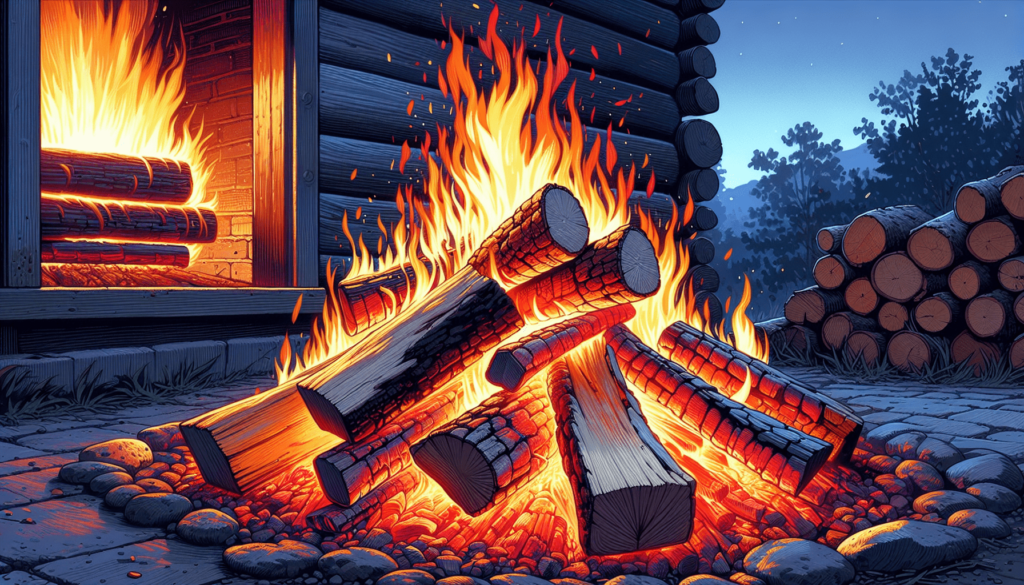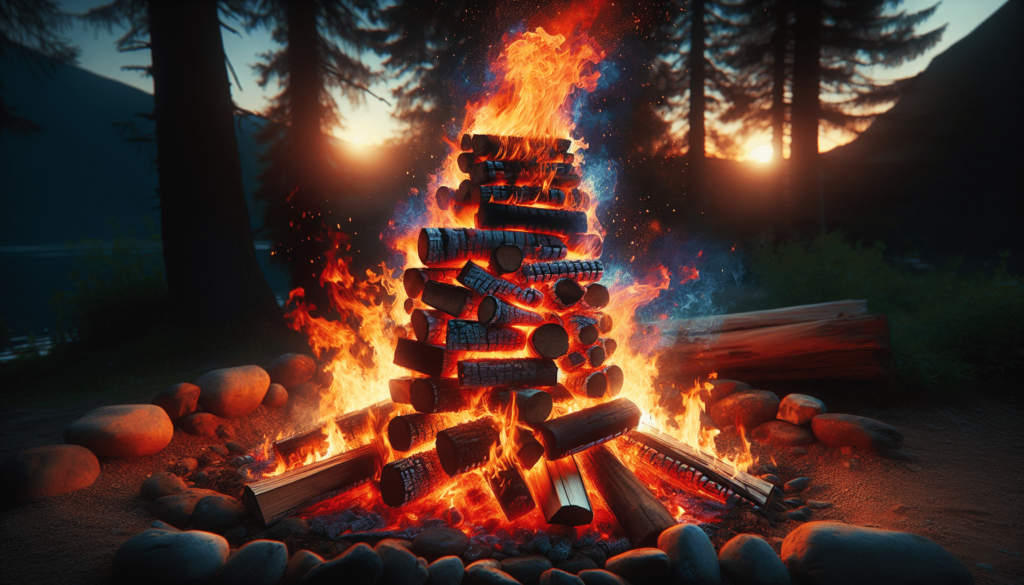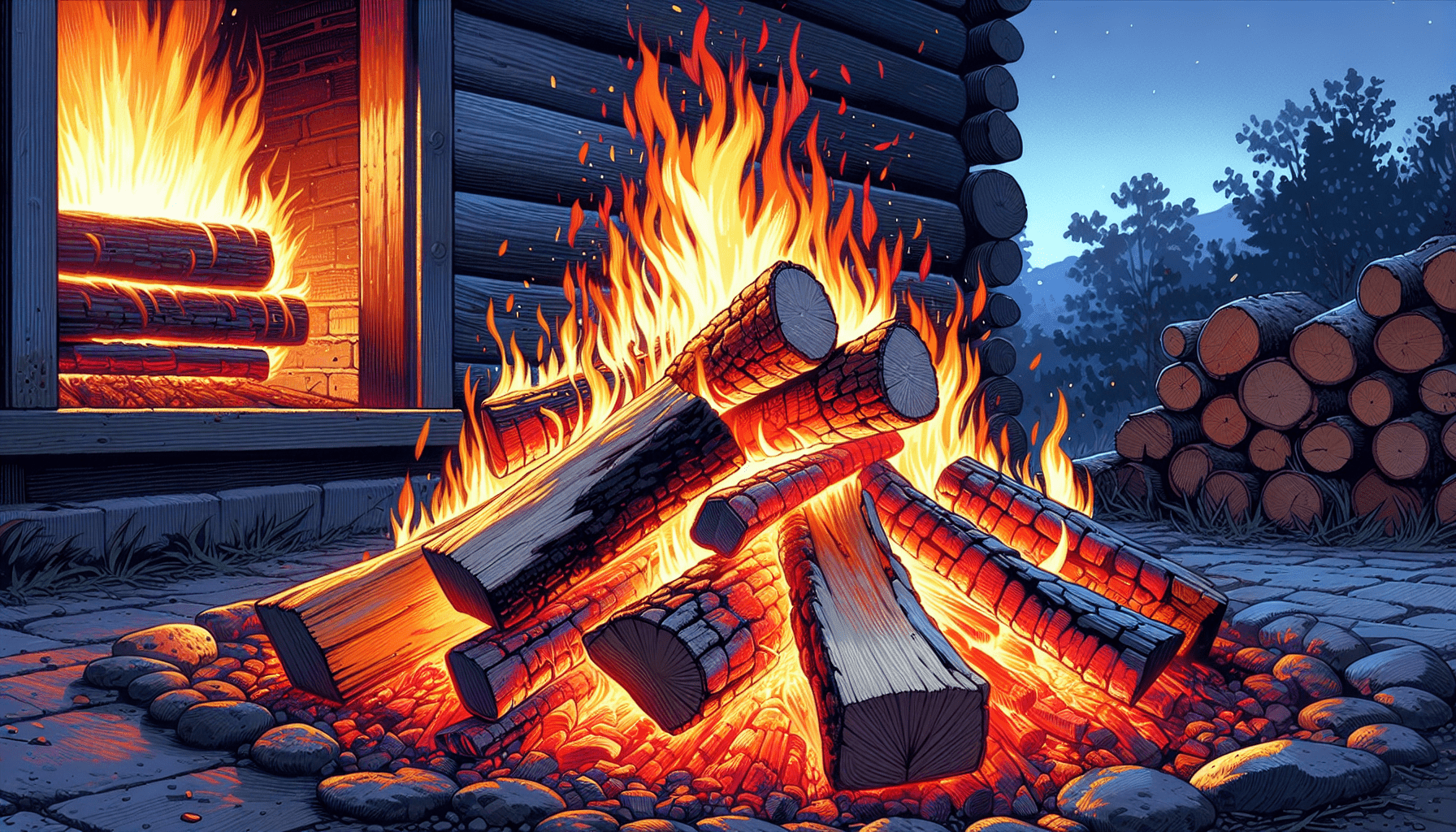What do you call the process of burning wood?
It’s something we all know on a sort of fundamental level. Whether it’s gathered around a campfire, a cozy night by the fireplace, or perhaps you’re just trying to get rid of the last evidence of that failed DIY project, the concept of burning wood is something many of us are familiar with. Yet, what do you call that process? Is it simply “burning wood”? Well, my friend, there’s more to it than just tossing a match onto a pile of timber.

Combustion: The Technical Term
So, let’s start with the official stuff. The process of burning wood is technically called combustion. I know, not the most exciting word, but it’s precise. When wood burns, it undergoes a chemical process involving heat, oxygen, and a whole boatload of chemical reactions.
Understanding Combustion
Combustion itself can be broken down into a few key stages. Imagine peeling an onion, but instead of layers of onion making you cry, you get layers of knowledge – which also might make you cry if you’re not into chemistry.
-
Preheating: As the name suggests, this is the warm-up act. The wood gets heated, typically by an external source like a match or a lighter. During this stage, the moisture in the wood evaporates.
-
Pyrolysis: This fancy term basically means heating the wood in the absence of oxygen. It’s the moment when the wood starts breaking down chemically, releasing gas. Think of it as the wood throwing a tiny tantrum, letting off steam.
-
Combustion: Here’s where the magic happens. Gases from the pyrolysis stage mix with oxygen, leading to flames – the kind that make you want to roast marshmallows.
-
Charcoal Formation and Reduction: After a while, the fire settles down, but the wood doesn’t just disappear; it forms charcoal. This charcoal can still react with oxygen, producing heat but no flames.
The Chemical Equation
If you want to impress your friends or sound particularly brainy, you could mention the basic chemical equation for combustion:
[ \text6\text\text_5 + 6\text_2 \rightarrow 6\text_2 + 5\text_2\text ]
This equation represents how cellulose (primary component of wood) reacts with oxygen (O₂) to form carbon dioxide (CO₂) and water (H₂O). It simplifies the process but captures the essence of what’s happening.
The Role of Oxygen
Remember that old science class where the teacher told you fires need oxygen? They weren’t kidding. Without oxygen, the wood’s just going to sit there looking dumb and not doing much. The oxygen helps sustain the combustion by reacting with the gases released during pyrolysis.
Types of Combustion
Turns out, not all fires are created equal. You might think a fire is just a fire, but there are actually types of combustion:
Complete Combustion
This is the ideal scenario, a fire’s best life if you will. Complete combustion happens when there’s plenty of oxygen, and it produces carbon dioxide (CO₂) and water (H₂O). It’s like when you have all the ingredients for your favorite recipe and follow it to the letter. The flames are blue, indicating high efficiency.
Incomplete Combustion
Sometimes life isn’t perfect, and neither are fires. When there’s not enough oxygen, you get incomplete combustion. Here, you can get carbon monoxide (CO), which is not only a sign that your fire isn’t doing its job well but is also downright dangerous. This kind of combustion also produces soot, that black stuff you see in chimneys and on marshmallow casualties.
The By-products of Burning Wood
When you burn wood, you get more than just heat and light. Several by-products are also created, and some of them are pretty interesting!
Ash
Ah, ash. The grey powdery stuff left behind. It might seem useless, but it’s got its own fan club of gardeners who swear it makes for good compost.
Smoke
Smoke’s probably the most obvious by-product, and it’s not just an annoying guest at your campfire. It contains gases like carbon dioxide and carbon monoxide, as well as fine particles. If you’ve ever tried to smoke out bees (not recommended, by the way), this is what’s at play.
Tar and Creosote
These sticky substances form especially when combustion is incomplete. Creosote is the stuff you really don’t want building up in your chimney because it’s a major fire hazard. Think of it as the arterial plaque of your fireplace.

The Environmental Impact
I hate to be the bear of not-so-great news, but burning wood isn’t exactly green. There’s a whole environmental aspect to consider. Even though wood is technically a renewable resource, burning it releases carbon dioxide, contributing to greenhouse gases.
Air Pollution
Wood smoke contributes to air pollution, which can be harmful to both the environment and human health. Particulate matter in the smoke can cause respiratory issues, and let’s not forget our friend carbon monoxide.
Deforestation
If you’re not sourcing your wood sustainably, you could be contributing to deforestation. Each log burned has to come from somewhere, and unsustainable logging practices can wreak havoc on ecosystems.
Practical Uses of Wood Burning
Despite its faults, burning wood has a range of practical applications. People have been doing this for a long, long time – we’re practically born pyromaniacs (just me?).
Heating
Historically, burning wood has been a primary source of heating homes. In many parts of the world, it still is. Yes, modern technologies have largely taken over, but there’s something timeless about a wood-burning stove that just can’t be beat.
Cooking
Don’t forget about cooking. From campfires to wood-fired ovens, cooking with wood adds a flavor that’s hard to replicate with gas or electric stoves. Ever had pizza from a wood-fired oven? If not, you need to rethink your life choices.
Industrial Use
Wood burning also finds its way into industrial practices like metalsmithing and pottery. The intense heat generated is perfect for various artisanal crafts and industries.
Ceremonial and Cultural
Let’s not forget the more ceremonial and cultural significance of wood burning. From bonfires at festivals to sacred rituals, fire has been a central element in human culture for centuries.
Modern Alternatives
Given the environmental and health issues related to wood burning, there are modern alternatives designed to keep us warm without the downside.
Electric Heaters
These are probably the most accessible. They come in all sorts of shapes and sizes and don’t require you to stockpile wood like a squirrel hoarding acorns.
Gas Fireplaces
Modern gas fireplaces mimic the aesthetic of wood-burning ones but with way less mess and risk. Plus, they often come with those handy remote controls – a win for the lazy person in all of us.
Pellet Stoves
For those who still want to stick close to the wood-burning experience but with a modern twist, there are pellet stoves. These use compressed wood or biomass pellets and are designed to burn efficiently with minimal emissions.
Safety Tips
Speaking of risk, let’s cap things off with keeping it safe. Whether you’re a die-hard wood burning fan or just an occasional fire-starter, safety is key.
General Safety Precautions
-
Never Leave a Fire Unattended: Seems obvious, but you’d be surprised how many people forget this.
-
Use a Screen or Door: In fireplaces, this is crucial to prevent sparks from flying out.
-
Regular Maintenance: Make sure to clean your chimney and fireplace regularly to avoid creosote build-up.
Indoor Wood Burning
If you’re burning wood indoors, ensure your space is well-ventilated. An accumulation of carbon monoxide is not something you want. Trust me on this.
Outdoor Wood Burning
Only burn seasoned wood. Freshly cut wood has too much water content and will smoke you out before you even have a chance to enjoy your fire. Plus, it’s less efficient – talk about a buzzkill.
In conclusion, the process of burning wood is much more than just “burning wood.” From the technical term of combustion to the stages and by-products involved, there’s a lot going on behind those flickering flames. While it’s a practice steeped in history and utility, it’s also essential to be mindful of the environmental and health impacts. So, the next time you cozy up by the fire, you’ll not only know what’s happening on a chemical level, but you might also have a newfound appreciation for the intricate dance of elements that makes that warmth and light possible.

